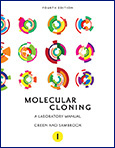Golgi Bypass: Skirting Around the Heart of Classical Secretion
- Cell Microscopy Centre, Department of Cell Biology, University Medical Center Utrecht, Heidelberglaan 100, Utrecht, The Netherlands*
- Correspondence: c.rabouille{at}hubrecht.eu
Abstract
Classical secretion consists of the delivery of transmembrane and soluble proteins to the plasma membrane and the extracellular medium, respectively, and is mediated by the organelles of the secretory pathway, the Endoplasmic Reticulum (ER), the ER exit sites, and the Golgi, as described by the Nobel Prize winner George Palade ( Palade 1975). At the center of this transport route, the Golgi stack has a major role in modifying, processing, sorting, and dispatching newly synthesized proteins to their final destinations. More recently, however, it has become clear that an increasing number of transmembrane proteins reach the plasma membrane unconventionally, either by exiting the ER in non-COPII vesicles or by bypassing the Golgi. Here, we discuss the evidence for Golgi bypass and the possible physiological benefits of it. Intriguingly, at least during Drosophila development, Golgi bypass seems to be mediated by a Golgi protein, dGRASP, which is found ectopically localized to the plasma membrane.
- Copyright © 2011 Cold Spring Harbor Laboratory Press; all rights reserved




















